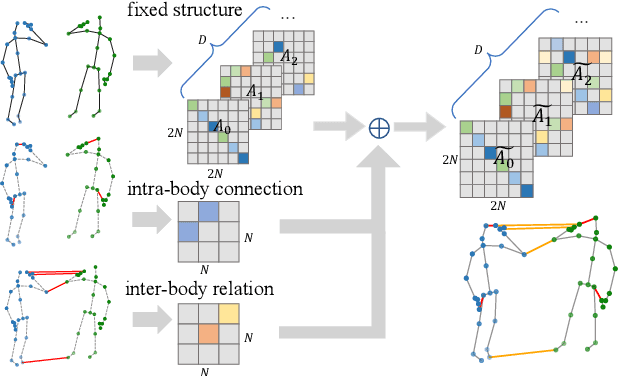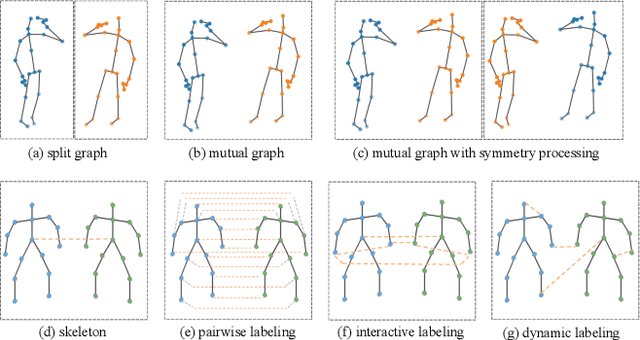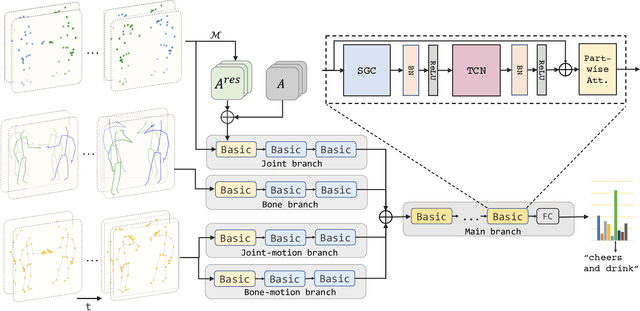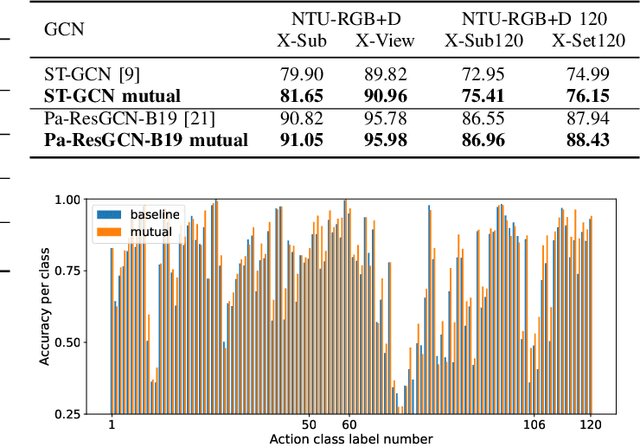Zhengcen Li
Skeleton-based Group Activity Recognition via Spatial-Temporal Panoramic Graph
Jul 28, 2024Abstract:Group Activity Recognition aims to understand collective activities from videos. Existing solutions primarily rely on the RGB modality, which encounters challenges such as background variations, occlusions, motion blurs, and significant computational overhead. Meanwhile, current keypoint-based methods offer a lightweight and informative representation of human motions but necessitate accurate individual annotations and specialized interaction reasoning modules. To address these limitations, we design a panoramic graph that incorporates multi-person skeletons and objects to encapsulate group activity, offering an effective alternative to RGB video. This panoramic graph enables Graph Convolutional Network (GCN) to unify intra-person, inter-person, and person-object interactive modeling through spatial-temporal graph convolutions. In practice, we develop a novel pipeline that extracts skeleton coordinates using pose estimation and tracking algorithms and employ Multi-person Panoramic GCN (MP-GCN) to predict group activities. Extensive experiments on Volleyball and NBA datasets demonstrate that the MP-GCN achieves state-of-the-art performance in both accuracy and efficiency. Notably, our method outperforms RGB-based approaches by using only estimated 2D keypoints as input. Code is available at https://github.com/mgiant/MP-GCN
Two-person Graph Convolutional Network for Skeleton-based Human Interaction Recognition
Aug 12, 2022



Abstract:Graph Convolutional Network (GCN) outperforms previous methods in the skeleton-based human action recognition area, including human-human interaction recognition task. However, when dealing with interaction sequences, current GCN-based methods simply split the two-person skeleton into two discrete sequences and perform graph convolution separately in the manner of single-person action classification. Such operation ignores rich interactive information and hinders effective spatial relationship modeling for semantic pattern learning. To overcome the above shortcoming, we introduce a novel unified two-person graph representing spatial interaction correlations between joints. Also, a properly designed graph labeling strategy is proposed to let our GCN model learn discriminant spatial-temporal interactive features. Experiments show accuracy improvements in both interactions and individual actions when utilizing the proposed two-person graph topology. Finally, we propose a Two-person Graph Convolutional Network (2P-GCN). The proposed 2P-GCN achieves state-of-the-art results on four benchmarks of three interaction datasets, SBU, NTU-RGB+D, and NTU-RGB+D 120.
 Add to Chrome
Add to Chrome Add to Firefox
Add to Firefox Add to Edge
Add to Edge